_______________________________________
Slide 1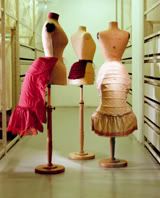
_______________________________________
Slide 2
The stocking frame – mechanical knitting machine
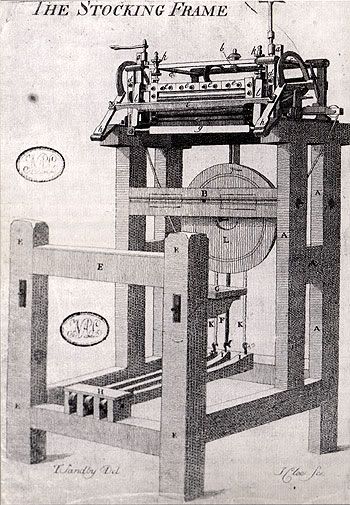
1585 – William Lee invents the stocking frame (known as framework knitting)
1598 – Modifies it to knit both silk and wool stockings
1663 - London Company of Framework Knitters granted a charter
1758 – Jedediah Strutt invents ‘Derby Rib’ attachment making it profitable to knit cotton socks on the machine
1812 – 25, 000 stocking frames in use
_______________________________________
Slide 3
The flying shuttle: new technologies lead to protectionism and mercantilism
1733 – John Kay develops the flying shuttle: larger widths of fabric can be produced by a single weaver
Countries try to maintain control of new technology through protectionism and mercantilism.
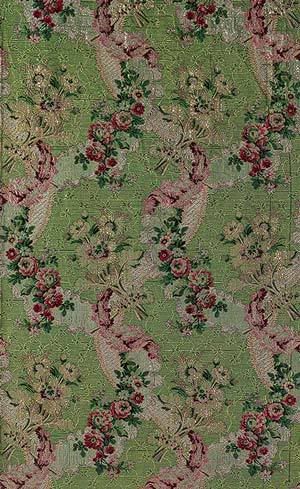
Width of brocaded silk, French, 1760
21.5 inches wide, Metropolitan Museum of Art
_______________________________________
Slide 4
The Spinning Jenny and productivity
c.1764 by James Hargreaves or Thomas Highs
One worker can spin 8 times as much yarn, later increased to 80 times
Often worked by children
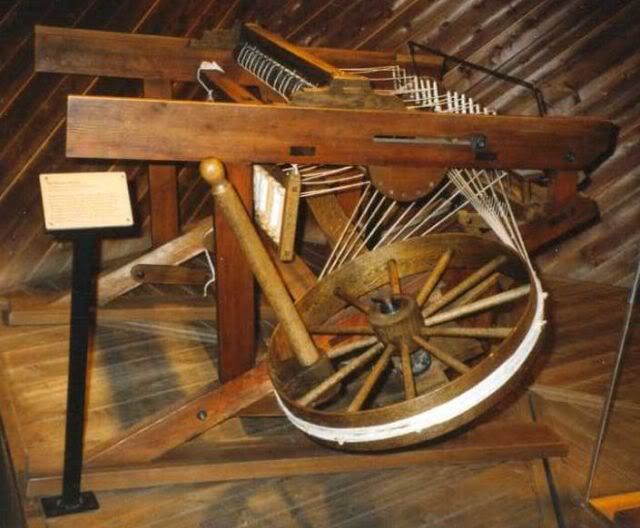
Spinning jenny from a museum in Wuppteral Germany
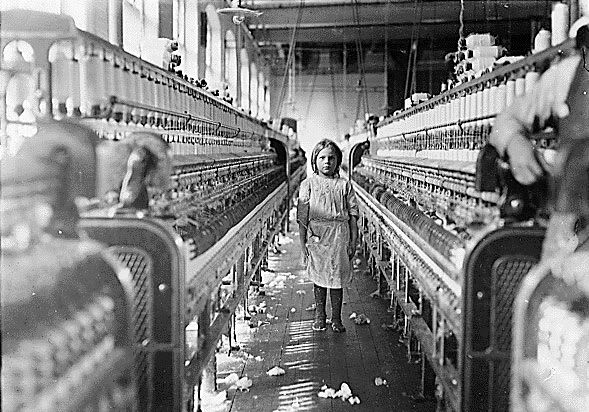
Child labour, South Carolina USA, 1908
“She just happened in…she was working steadily”
_______________________________________
Slide 5
Water Power
1771 – Invention of the water frame, weaving powered by water
1779 – Invention of the spinning mule – strong thread on a massive scale
1785 – Power loom, initially powered by water, then by steam.
1823 – 10,000 power looms in England
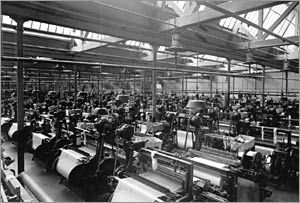
Power loom factory, Finland, 1877
_______________________________________
Slide 6
The cotton gin, slavery, and cotton fabric
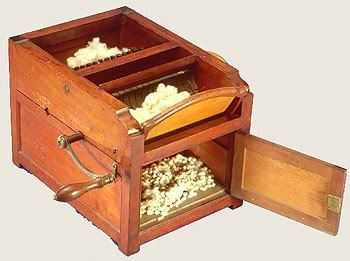
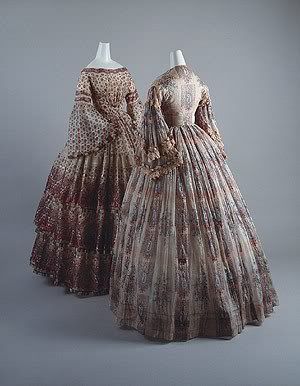
Cotton afternoon dresses, French, ca 1855, Metropolitan Museum of Art
_______________________________________
Slide 7
Block Printing
1700s - technique of printing from engraved wooden blocks developed
Can carry many colours, but are time consuming to produce.
Fine details created by adding copper borders to the blocks
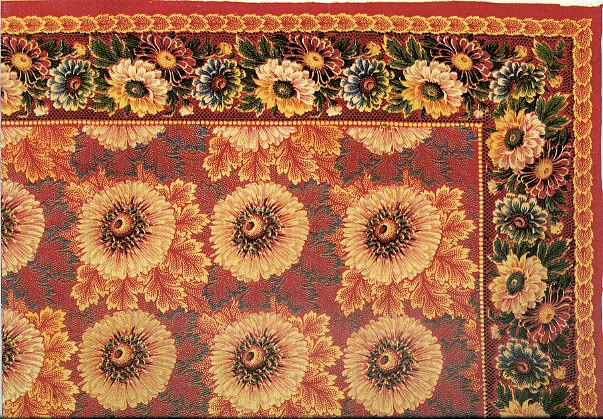
Block printing with turkey red, 1840
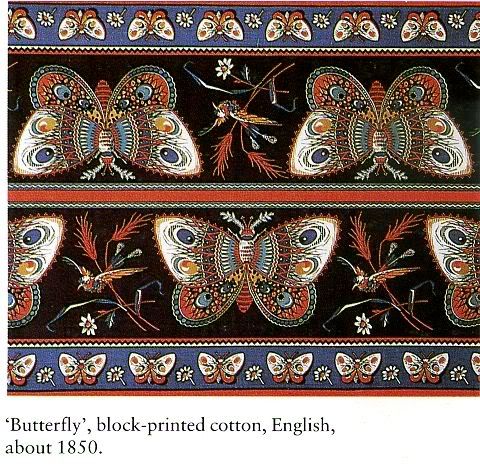
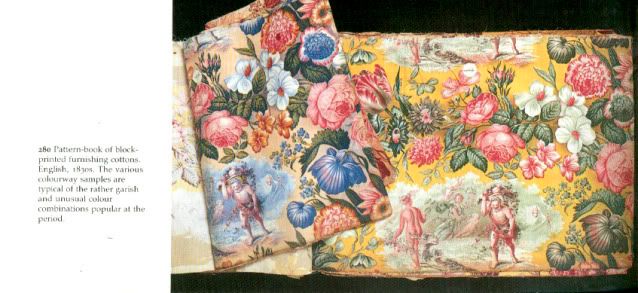
_______________________________________
Slide 8
Engraved Copper Plates
1750s a new technique of engraved copper plates was developed-plates and designs were larger and could carry more detail.
1798 engraved plates became rollers-entire length of cotton could be printed continuously in single mechanical process. 500 pieces could be produced per day
Engraved plates can only carry one colour: additional colours are added through block printing
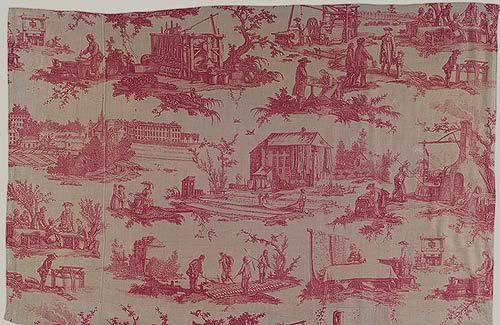
The activities of the factory, French, Jouy, 1784, Metropolitan Museum of Art
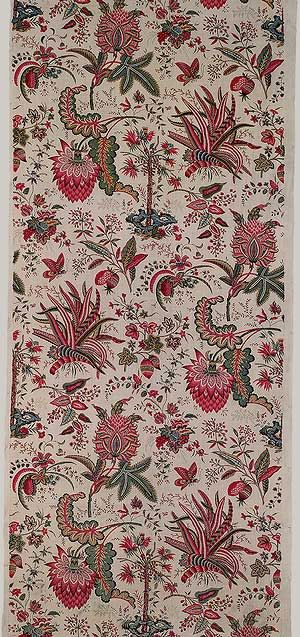
Colours added through block printing, French, Jouy, 1787, Metropolitan Museum of Art
_______________________________________
Slide 9
Bleach
Pre 1800 – bleaching takes up to six months
1800 – powdered chlorine and lime bleaching invented, bleaching shortened to days
Bleach can be used to create small, detailed patterns: bleach works with resists and mordants to preserve/create spaces for new colours
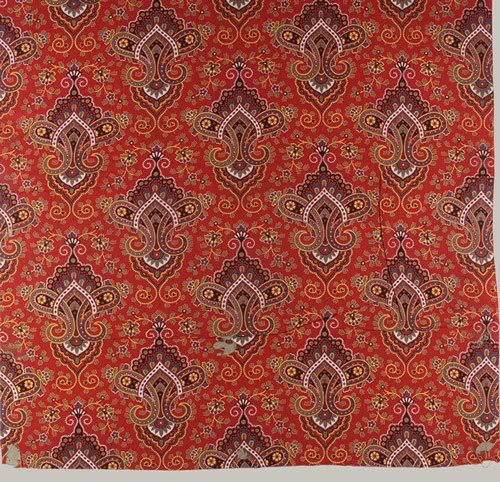
Persian Shah printing on cotton, Russian, 1896, Metropolitan Museum of Art
_______________________________________
Slide 10
The Jacquard Loom
1801 - invented by Joseph Marie Jacquard
Allows greater complexity of patterns and weaves
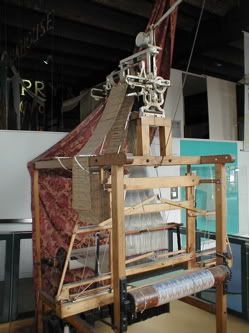
Jacquard loom, Museum of Science and Industry, Manchester, England
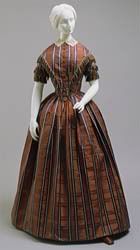
Day dress, French, 1845-1850, Metropolitan Museum of Art
_______________________________________
Slide 11
Tartan
1815 – Clan tartans registered (and invented)
1822 – King George IV visits Scotland, tartan becomes the national dress
1848 – Queen Victoria rents, and subsequently buys, Balmoral Castle
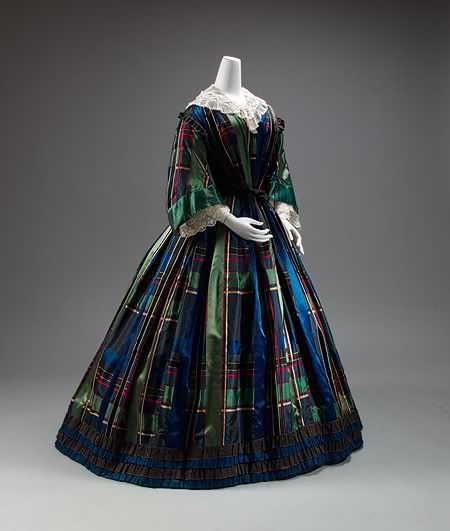
Tartan silk dress, American, 1857, Metropolitan Museum of Art
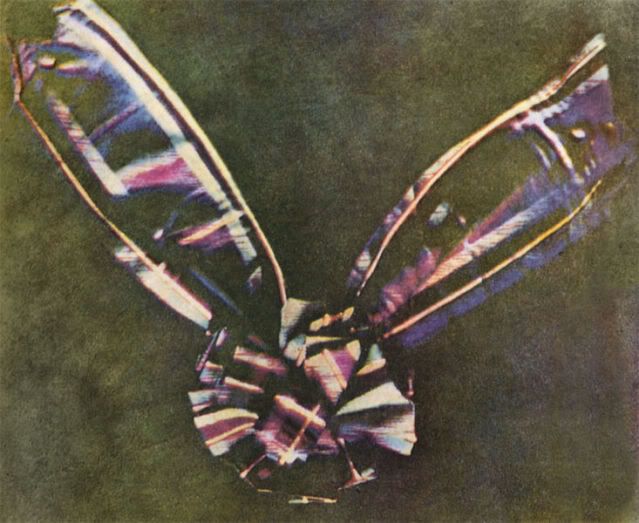
First colour photograph, 1861
_______________________________________
Slide 12
The Sewing Machine
1851 – invention of the sewing machine
1854 - embroidery machines: machine embroidery taken up in Ireland and Britain
1870 - marketable family sewing machine
1873 - Singer factory
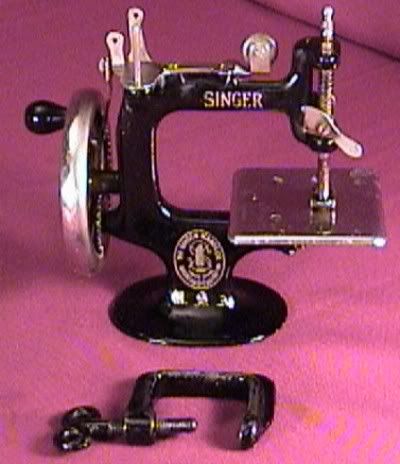
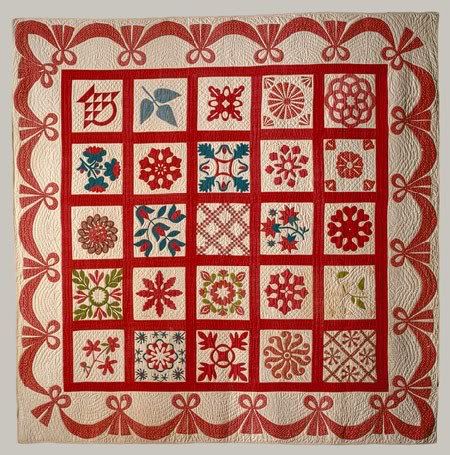
Album quilt, New York state, America, ca 1860, Metropolitan Museum of Art
Borders applied with sewing machine
_______________________________________
Slide 13
Aniline Dyes
1856 – First aniline dye, mauveine, invented by William Henry Perkins
Late1850’s –Other aniline dyes created: Magenta and fierce purple-pink
1860 - aniline black, Manchester brown, yellow
1863 - first green not to go blue
1884 - Congo blue an indigo substitute
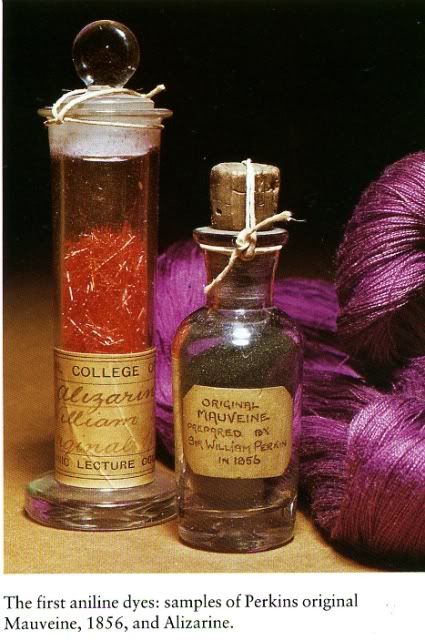
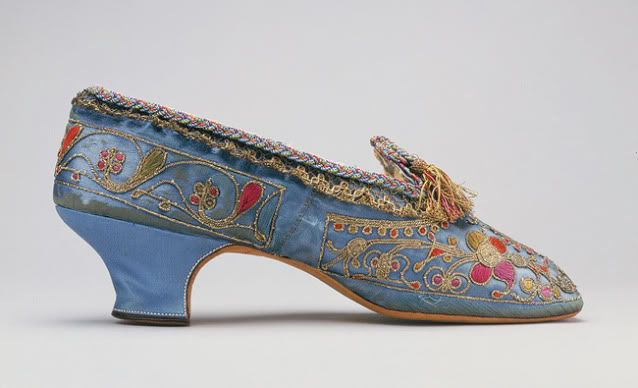
Shoe of silk decorated with aniline dyed embroidery, 1873, Metropolitan Museum of Art
_______________________________________
Slide 14
Taste and the rise of the middle class
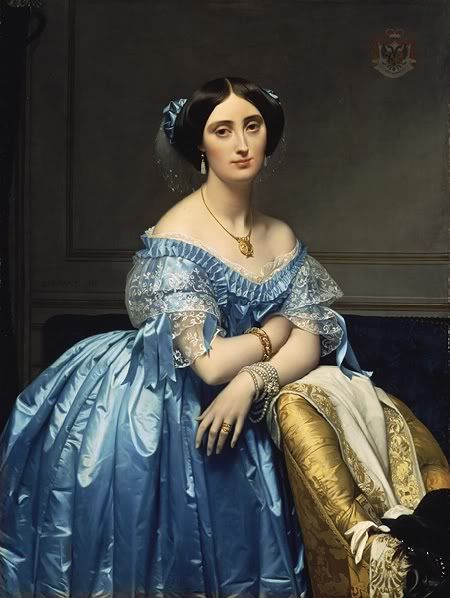
Princess de Broglie, 1851, Metropolitan Museum of Art
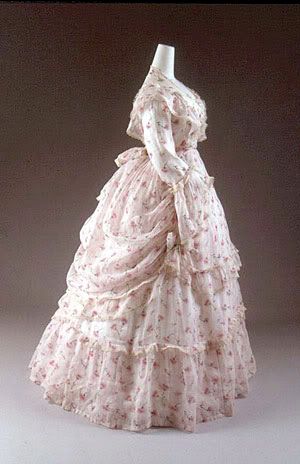
Day dress, French, 1872, Metropolitan Museum of Art
_______________________________________
Slide 15
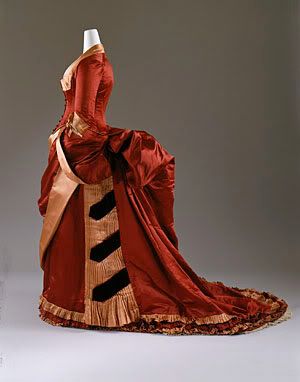
Evening gown, American, 1884-1886, Metropolitan Museum of Art
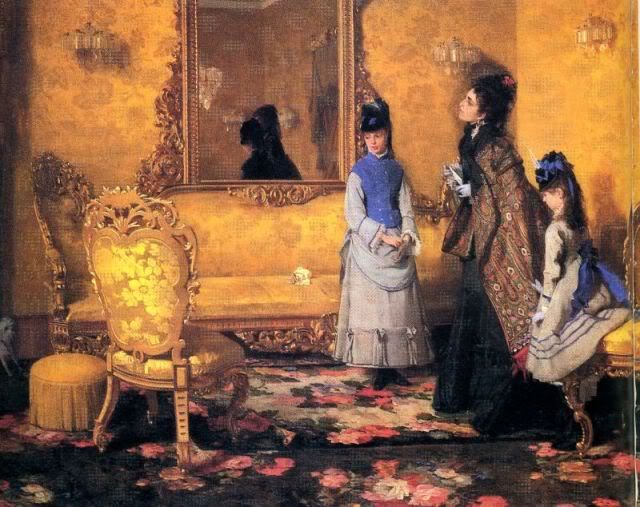
The letter of recommendation, Luigi Busi, 1874
_______________________________________
Slide 16
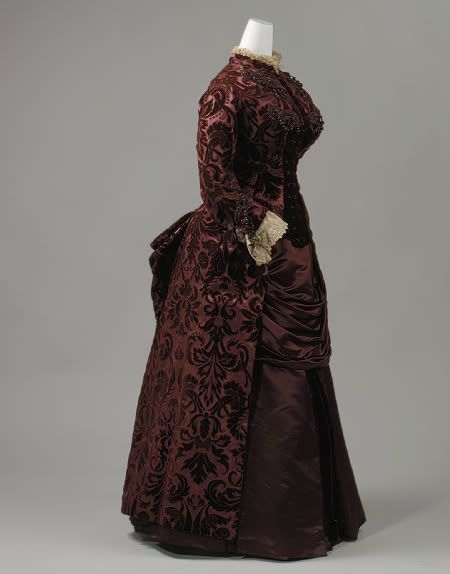
Day dress, American, 1883-1885, Metropolitan Museum of Art
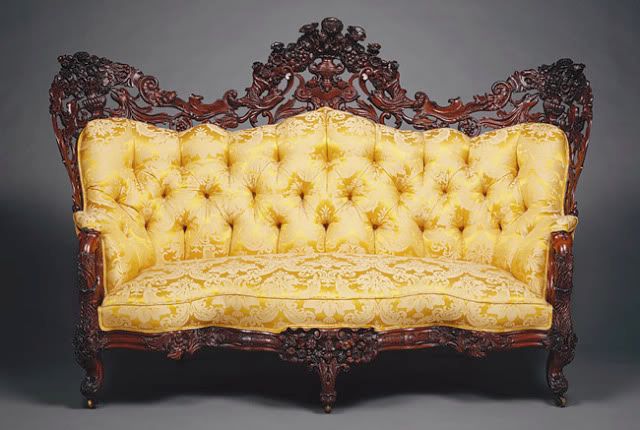
Sofa, American, 1860, Metropolitan Museum of Art
_______________________________________
Slide 17
Domestic textile arts
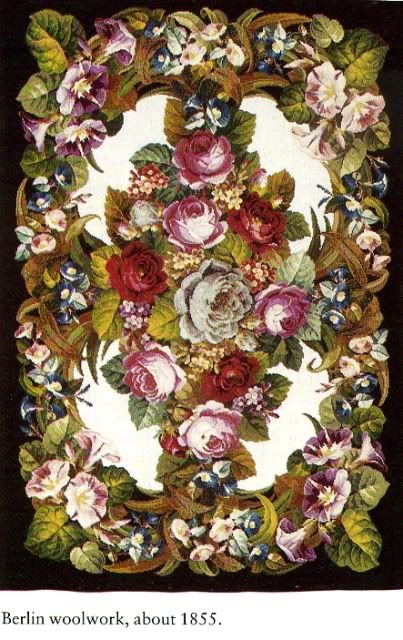
_______________________________________
Slide 18
The Great Exhibition of 1851
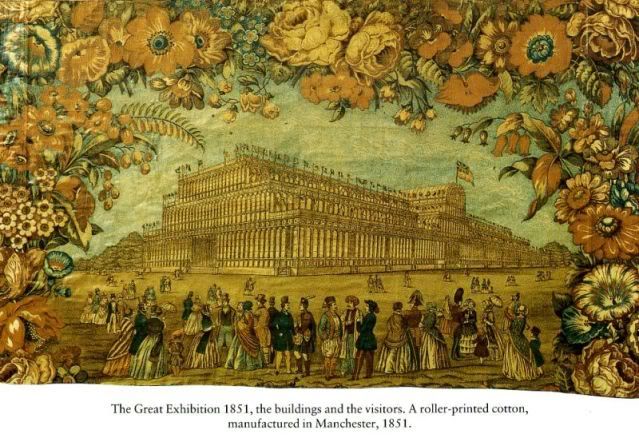
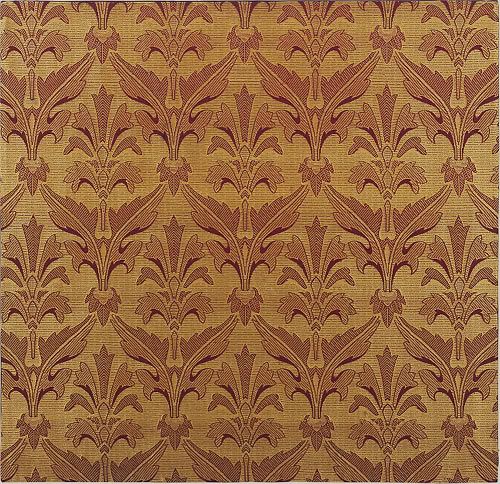
Italian print, Owen Jones, 1873, Metropolitan Museum of Art
_______________________________________
Slide 19
The Arts and Crafts Movement
Led by William Morris, believed designer should know how to create product
Small-scale craftmanship
Nothing in your home that is not beautiful
Linked to Pre-Raphealites and Art Nouveau
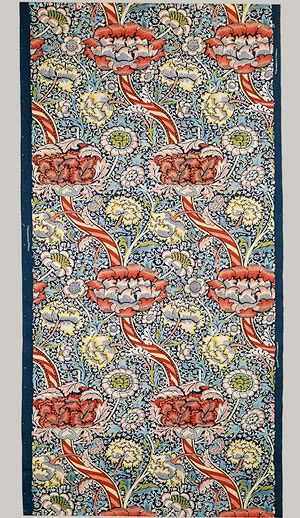
Wandle print, William Morris, 1884, Metropolitan Museum of Art
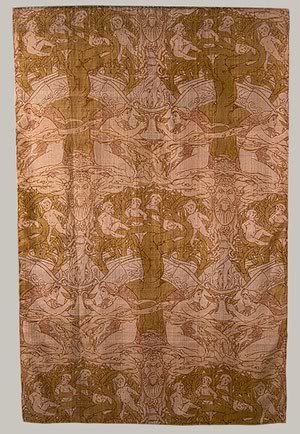
Allegorical figures, 1893, Metropolitan Museum of Art
See also:
nice blog
ReplyDeleteI remember that my grandmother had a sewing machine like that and with it she made me dresses and she sold them too it was great because I learned to sew with her. Generic Viagra Buy Viagra
ReplyDeleteI still use my hand machine, though mine is 1902
ReplyDelete